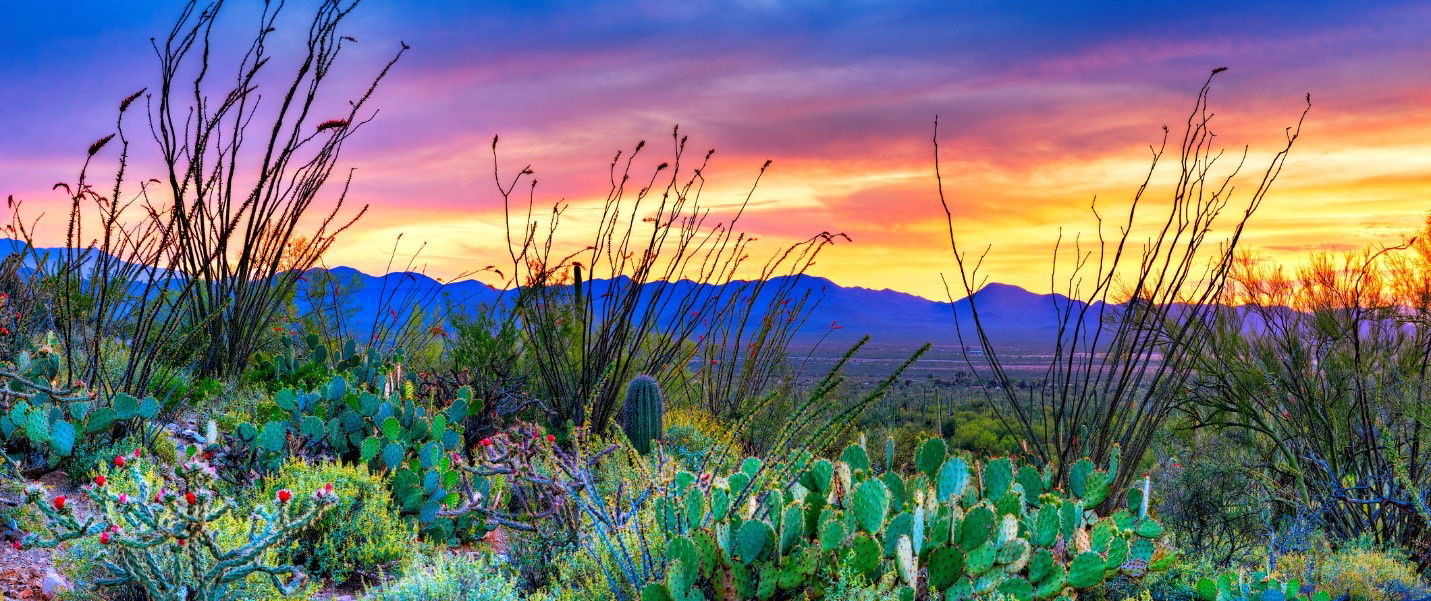


Just outside of Tucson, you will find the amazing scenery offered by Saguaro National Park. The park is home to some of the largest cacti in the country. Established in 1933, the park was intended to be a protective haven for the iconic cacti that live there. Symbolizing the old west, these plants are incredible to see up close and in person. Saguaro National Park is actually a park within the desert. Beyond just the cacti, there is an array of animal life here as well. Visitors to the region might just get to see everything from a javelina (a.k.a. skunk pig) to antelope. And with campgrounds available in the eastern district of the park, spending a night under the desert sky proves an incredibly tranquil and inviting experience.
There are 6 designated areas within the park in which tourists can camp out. With the highest campground at an elevation of 8000 ft, you can rest assured that the views from many of these spots are breathtaking.
With a number of trails leading through the wilderness area, you have plenty of great opportunities to explore the park and Rincon Mountain Area. Given that there is nearly 92,000 acres of protected land, visitors are sure to see a wide array of plant and animal life.
While hiking through the park is the most popular means of experiencing all it has to offer, both districts also allow biking and horseback riding as well. Beyond the trails, there are paved roads that run through the park.

The weather can vary drastically as the low elevation of the park sits at about 2,000 feet and the high point is above 8,000 feet. Winters are generally pretty mild. The one day of the year that the park is closed is Christmas.

Spring is a good time to visit because of the sunny, but not too warm, weather. April highs are in the low-80s. Spring is the dry season, and it is very unlikely that you will have to deal with rain.

Summer is definitely hot, but not quite as much as other parts of Arizona. The lower elevation areas of the park will get up near 100 degrees. Summers can be more crowded due to kids on summer break. Summer is also the (relatively) wet season.

Fall can be a fantastic season for visiting the park. October temps are in the mid-80s.